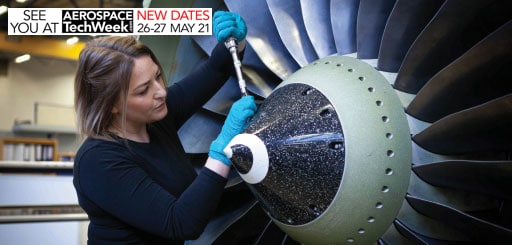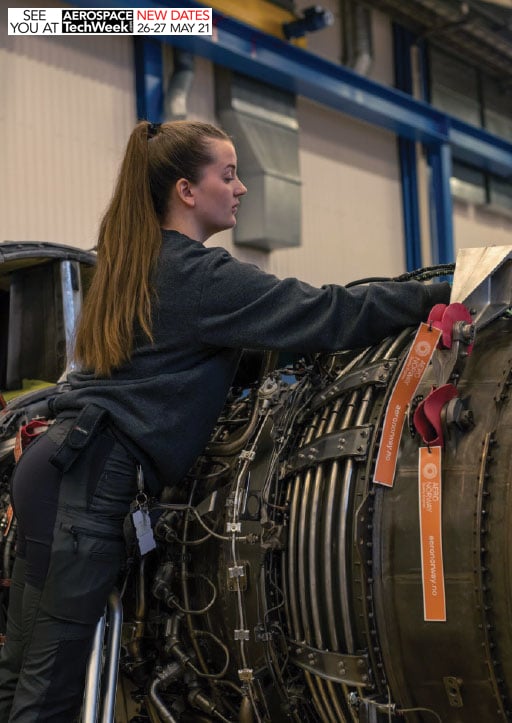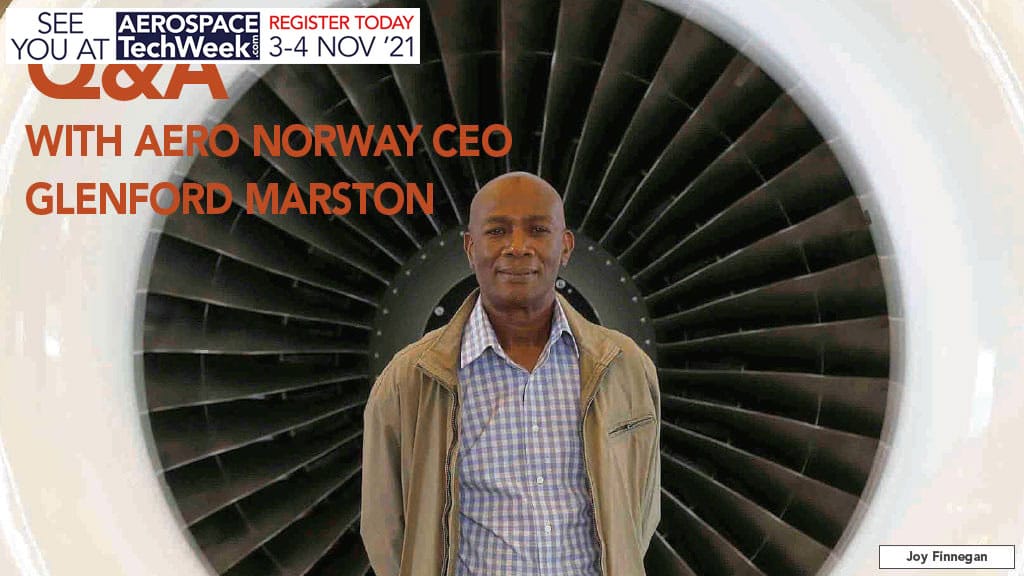Aero Norway has built its reputation as an exclusive CFM56 engine provider, priding themselves on high standards, EGT margins, Competitive turnaround times and long-term client partnerships. The company also says they try to “harness the special characteristics of strength, focus and independence that embody the Norwegian way of life.” We spoke to CEO Glenford Marston to see how this specialist shop is doing amidst the pandemic and what advice he may have to offer others trying to survive this unusual time.
In one year we have seen a dramatic change in the aviation industry. How has this change impacted Aero Norway?
MARSTON:
We have, of course, seen a significant impact upon Aero Norway as a result of the pandemic and have adapted our working practices to support our customers as well as protecting our team. Although we have been busy and have been fortunate that we have kept our skilled workforce intact, we will certainly not be reaching 2019 revenue levels due to the reduced number of shop visits. We have seen more CFM56-3s coming to the shop for induction and are carrying out repairs on CFM56-5Bs and CFM56-7Bs, but fewer engines are coming in for major overhaul.
Aero Norway’s has always been on supporting our customers and as part of this we are undertaking short and hospital workscopes on engines as a bespoke service. More and more engine MROs are gearing up for these short workscopes as demand increases, and even though not our core business model, we are offering these services for existing customers. Another shift we have observed is that customers are sending us engines which we would ordinarily work on in-the-field because of restrictions in flying and quarantines in place. However, we are still carrying out field work for target customers or existing customers requiring additional support.

What is your view of the outlook for airlines/aviation vis-à-vis the pandemic?
MARSTON:
With fewer people flying, and many aircraft grounded we can expect to see significant reductions in fleet sizes as operators are forced to restructure. I also anticipate increased numbers of Classic freighter engines in the shop as the demand for air cargo continues to rise. This restructuring will affect all MROs as there will be more engines available for teardown or part out. It may also help customers and Aero Norway as we will be able to acquire materials which were difficult to source in 2019. There is potential for 2021 to be to be a good year for that at least.
Has your backlog been impacted?
MARSTON:
Many shop visits which were planned for our customers did not materialise. We had initially forecasted that we would induct 102 engines this year however we reassessed our predictions early on and changed our goal to 87 engines this year. The impact of this has been a visible shift in workscope ratios from heavy engine core performance to hospital visits. We had initially predicted 65-70 percent heavy engine full core performance workscopes for this year but this is becoming a 50/50 split between heavy to light engine workscopes in Qs 3 and 4 of 2020.
What is Aero Norway doing to weather the crisis?
MARSTON:
We are in preparation mode for better times. We had committed to necessary investment in modifications and upgrades and have used this quieter period to carry these out. At Aero Norway we are constantly reassessing, re-evaluating and looking for ways to improve our processes in pursuit of reduced turn-around times. In 2019 we invested in a state-of-the-art high-speed grinder, which was followed by an upgrade to our plasma spraying machine and most recently to our static balancing machine. We are also carrying out numerous small projects around the shop to benefit our customers and this time has given us the opportunity to complete these.
In terms of our team, our skilled workers have modified working patterns to accommodate social distancing measures, and we have followed all the guidelines set by the Norwegian Government with regard to restrictions to visitors in to the shop, and business travel. Our mechanics, engineers and technicians are currently only working four days a week, and some have been redistributed within the facility where there is demand and they have the relevant skills. We are proud to have kept our team intact during this challenging time and have all taken a 20 percent reduction in pay to accommodate the change in workload.
Do you envision more focus on the CFM56-5BS and -7B engines for the future or are you adding new models to your offerings?
MARSTON:
As a CFM56 specialist repair station our intention has been to add the LEAP capability to our offering and we have recently finished all necessary assessments. We have accessed the manuals for the 1a and 1b and have evaluated the levels of workscopes required for the introduction into our shop. In light of the current situation, however, we have decided to put this on hold until Q4 2021 and will not make any more investments until that time.
Our focus has always been to get more 5B and CFM56-7Bs into the shop, and in 2019 63 percent of our inductions were CFM56-5Bs and CFM56-7Bs, with 37 percent CFM56-3s. Our forecast for 2020 was 72 percent CFM56-5BS and CFM56-7Bs, and 28 percent CFM56-3s and we had paved the way to encourage those customers into the shop, however the actual split in inductions between CFM56-5BS/CFM56-7Bs and CFM56-3s has been 52 percent to 48 percent. Although this is not the worst-case scenario by any means, it is certainly not what we had envisaged and planned for. We would of course like to focus more on the CFM56-5Bs and CFM56-7Bs, however supporting our customers remains a priority and we have already agreed to support their CFM56-3 requirements until 2026.

How are you helping your clients deal with the challenges brought about by the pandemic?
MARSTON:
One of the biggest issues for our customers at present is cash flow and we are working closely with them to understand their immediate needs. Many are requesting customised workscopes designed to reduce costs or lengthened payment terms that will allow them to carry out necessary works. Our survival is linked to their survival. We have many smaller customers and for them particularly the option of being able to have flexible payment plans is important for their business, and they really appreciate that.
We spoke with Rune Veenstra, chief business officer for Aero Norway, a year ago. He mentioned at that time, the supply chain was struggling to keep up with demand for shop visits. Has that changed now? Is the supply chain better? Has anything been done to improve it? Or is the slower pace of operations the only change?
MARSTON:
There are still some supply chain issues. Although there are many aircraft parked, people are not interested in purchasing material as they are waiting to see how the market will unfurl. There are some parts which are currently more readily available, for example new parts, however most of our customers prefer to have used parts which offer them some cost savings. The only real benefit seen by our logistics team has been more leverage when closing a deal.
When our parts are sent for repair, we maintain an open dialogue with the OEMs and third party workshops as many of them are working at a reduced level with some only operating two days a week. This does affect TATs in terms of the time taken for parts to be returned to us, however we are endeavoring to work closely with the repair teams to ensure that our end customers are not affected.
Aero Norway is known for being flexible and customizing for their clients. Give us some examples of how Aero Norway customizes offerings for their clients.
MARSTON:
Early on in the pandemic we invested in five CFM56-3 engines to support our customers which were introduced to our refurbish and sell programme. Although the CFM56-3 is a legacy product for Aero Norway, we have the skilled technicians to extract the best EGT margins and consequently generate greater efficiencies and economies for our freighter customers. Within our facility we have converted major module build space into four additional repair bays to satisfy the volume of lighter workscopes currently coming into the shop as well as investing in the training, fixtures and tooling to support it.
Currently we are seeing customers sending in three engines, for example, with a view to getting two back to revenue service. One engine would therefore be a donor engine to repair the other two reducing our customers’ costs, as well as giving us the opportunity to also harvest some good materials for ourselves. We have previously done this with CFM56-3s, and continue to do so, but this has now also been extended to CFM56-5BS and CFM56-7Bs. With so many aircraft grounded this is certainly a growing trend and we are carrying out these workscopes for owners, lessors and operators alike.
With every challenge comes opportunity. Where are you seeing opportunity amidst the pandemic? Have there been any bright spots in the crisis?
MARSTON:
We are continually looking for opportunity, and one of the main opportunities for us would, of course, be sourcing good material/parts. At Aero Norway we have an engine programme where we buy assets, rebuild them and recycle them back to the market. We would like to focus more on CFM56-5BS and CFM56-7Bs and are waiting for the price to be right. However we are still not in a position to be able to gauge the price escalation for this year from CFM, to find out how they will support us and whether they will be looking to clear their backlog of material. We have never lost our focus on the -3 and we still have a significant number of -3 customers who we will continue to support. But we did not expect so many CFM56-3s to be entering the shop for large workscopes such as full core performance and LLP replacement. This year CFM56-3s will account for around 50 percent of the engines which will pass through the shop.
Are there any other challenges in the engine MRO marketplace right now (in addition to the pandemic)?
MARSTON:
Every MRO is facing challenges right now as replacement parts are the drivers of cost. We can control the cost of the workscope management, but especially now, all customers are looking for added value. Management of material is the main challenge: how it is moved around, and what support we can get from suppliers and the OEM.
Do you predict there will be pent up demand for engine services when the pandemic ends?
MARSTON:
Engines will always need shop visits, and this cannot be avoided. There will certainly be a pent-up demand, however this will very much depend on the resurgence of air travel. Engine service requirements are driven by usage and currently we are seeing more of the classic freighter engines as air cargo booms. However, we are still actively bidding to secure 5B and 7B engine inductions for the future.
The old saying goes “Hindsight is 20/20.” Knowing what we know now, what would you have changed or done differently two years ago to prepare for the current situation?
MARSTON:
With the benefit of hindsight, I would of course have made some strategic buys and reduced the inventory of materials for engines that will not be entering the shop. For example, purchases we made to support CFM56-5BS and CFM56-7Bs would not have been made, and we would have had more CFM56-3 engines ready to go. This pandemic may create a marketing place where material purchased for use in 2020, will diminish in value; we could then have waited until 2021 to buy the same material at a reduced cost.
How should aviation MRO businesses be preparing for the future?
MARSTON:
Due to the uncertainty surrounding the timescale for recovery, which could be up to four years we need to be more cash conscious going forward. I think the upturn will take some time and I do not expect to get back to 2019 levels in the near term.
